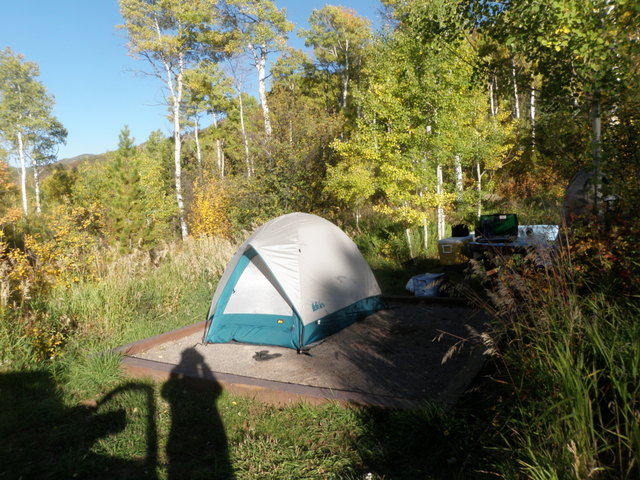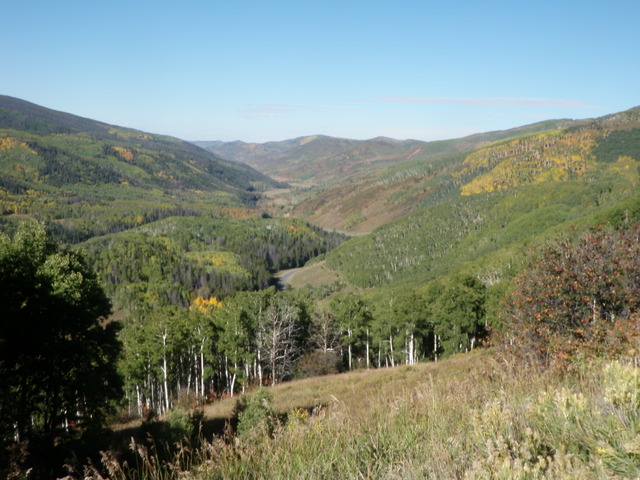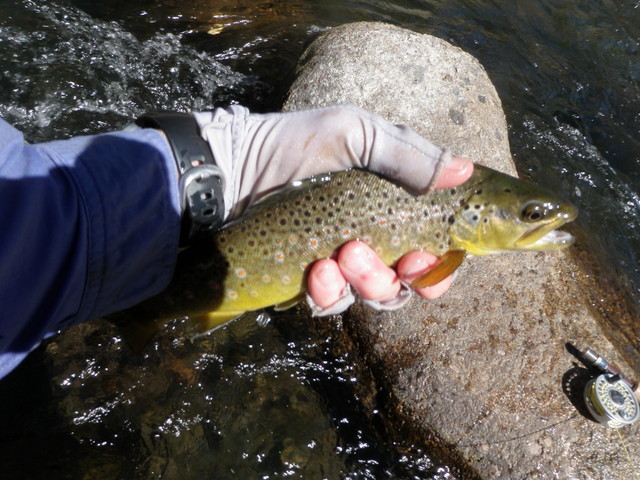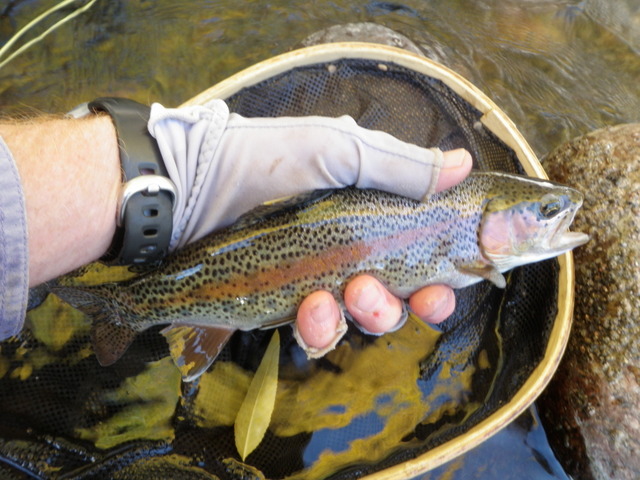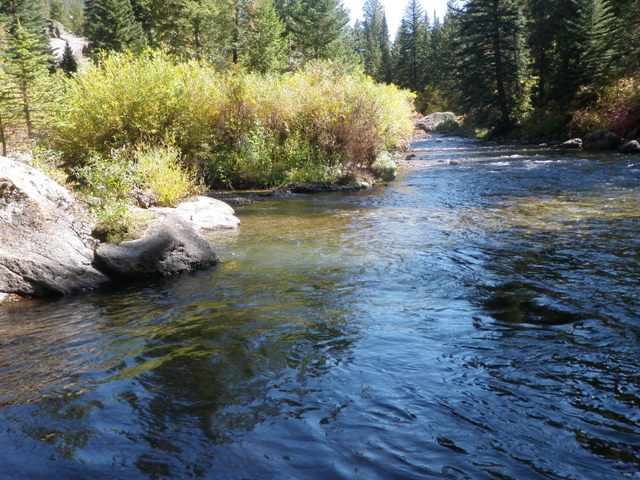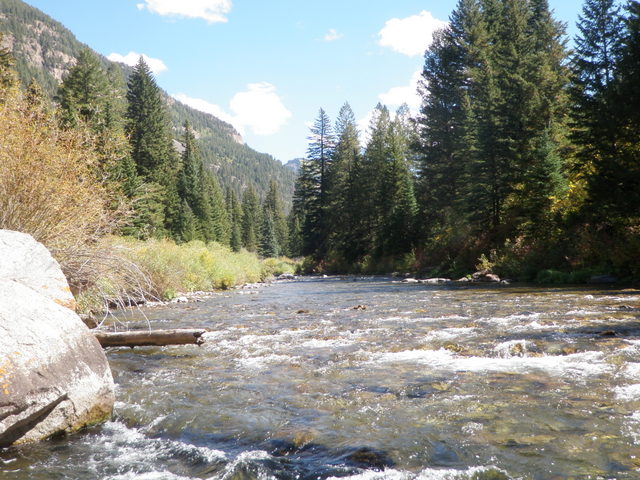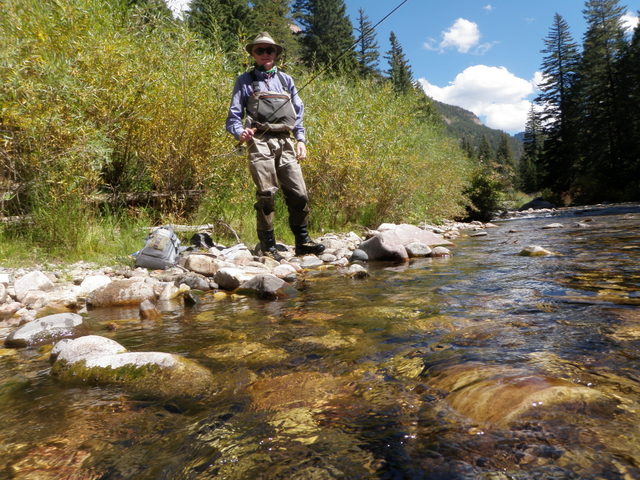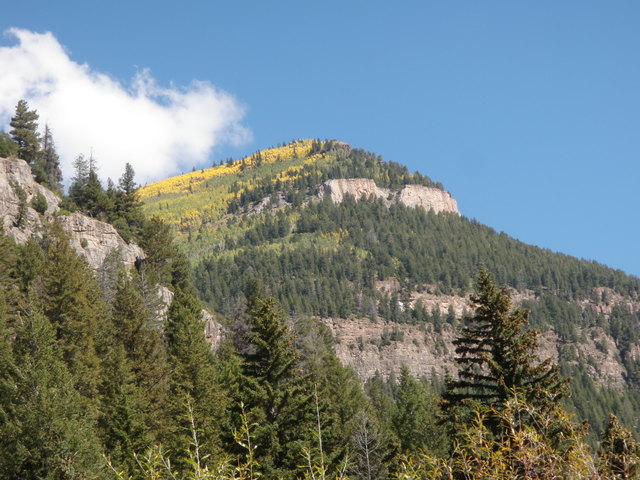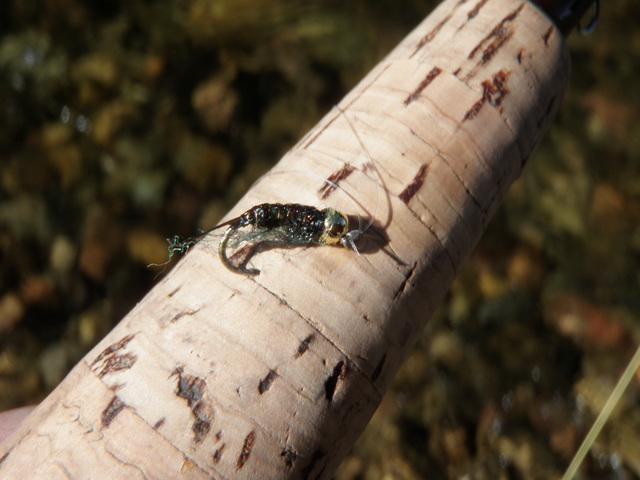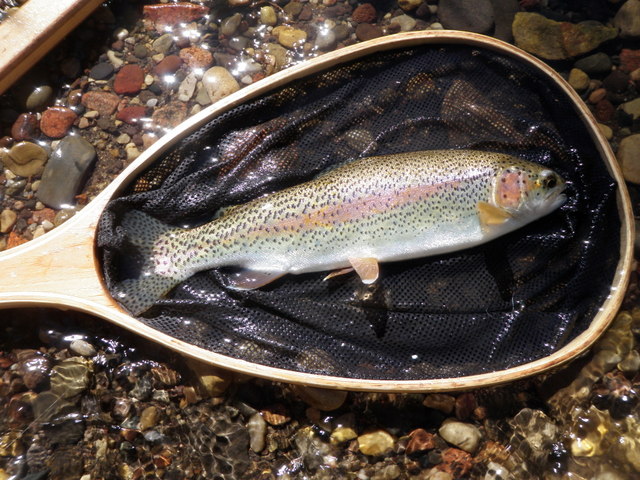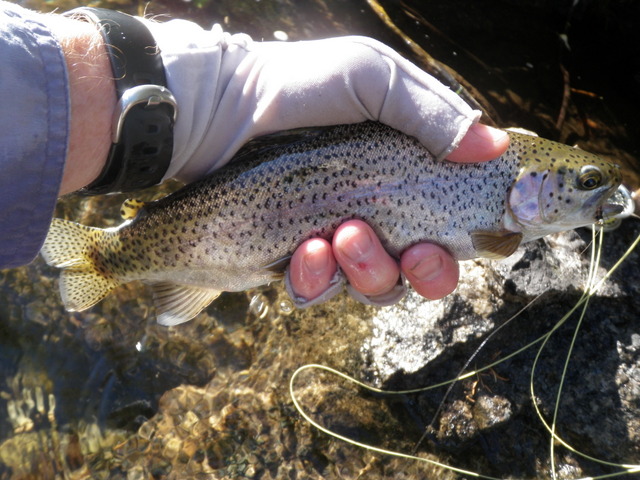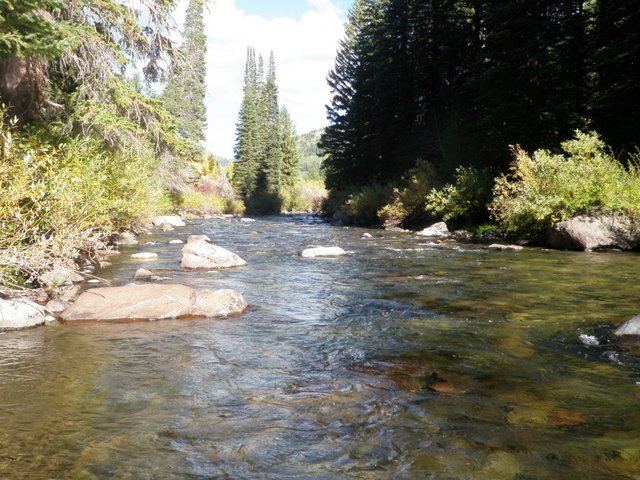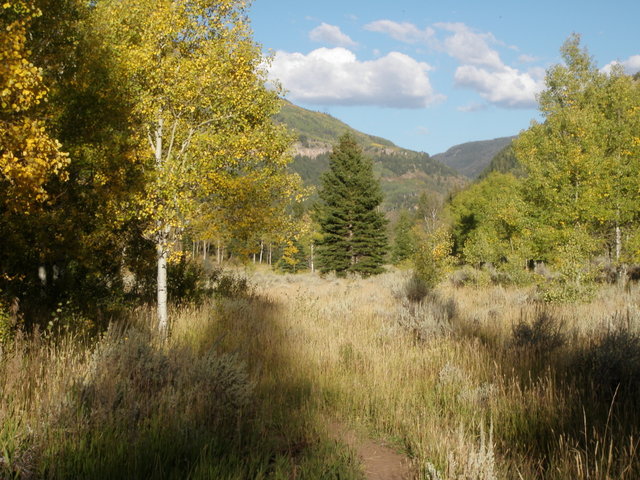Time: 1:00PM – 5:00PM
Location: The Preserve at Edwards
Fish Landed: 9
Eagle River 09/19/2014 Photo Album
How much fishng can one man endure? I’d been fishing for three consecutive long days in the Flattops region of Colorado, and I was weary of camping and anxious to return to my wife and the comforts of modern living. Yet on the other hand, Colorado was experiencing a wonderful run of gorgeous early fall weather. The leaves in the high country were on fire, and my return route would take me over the Colorado River and along the Eagle River. I resolved to be open to the possibility of spending an afternoon fishing. After all it was right along the way, and I had another day away from the office to enjoy.
I woke up early, and since the air temperature continued to be relatively comfortable in the morning, I made breakfast and packed up the tent and began the four hour journey to Denver. As I traveled on the gravel Trappers Lake scenic byway, I stopped numerous times to snap photos of the brilliant yellow aspen trees.
I passed over the Colorado River at Pumphouse and noticed quite a bit of boating activity with many drift boats in the launch area waiting to depart. This area looked quite interesting, and I made a mental note to explore it on a future trip, but since I only had a half day available on Friday, I did not want to spend it on unfamiliar water. I continued for another half hour until I crossed the Eagle River at Wolcott. The sight of the crystal clear flows clinched my decision, and I decided to spend the afternoon attempting to entice trout with my personally tied flies.
I gave Jane a quick call to let her know I would not be home until the evening, and then I called my friend Todd Grubin to see if he was available to join me. He replied after only one ring, and sure enough he was headed to the very same section of the river that I had in mind. I pulled into the parking lot at The Preserve at Edwards at around 12:30PM and immediately downed my lunch. I must have known all along that I planned to fish because I prepared a lunch at the campsite. I assembled my rod and pulled on my waders, and I was prepared to fish by the time that Todd arrived. It was quite warm again on Friday with bright sunshine, and it would get even warmer by the middle of the afternoon. The flows were in the 150 cfs range, and that is a bit low, but certainly ample volume to keep the trout happy especially with the colder overnight temperatures.
Todd and I followed the trail to the river, and I decided to cross at the tail of a shallow riffle sEction so I could fish upstream on the far side which included a long stretch of tantalizing deep pockets and runs. Todd meanwhile hiked downstream to a wide deep run where he recently experienced a fair amount of success. I had my eye on the pocket water ever since I first discovered The Preserve with Todd and Dave Gaboury in the fall of 2013, and I was anxious to apply my dry/dropper technique since it appeared to be ideally suited for that approach.
I tied a Chernobyl ant to my line and below that added the ever present beadhead hares ear and then my newly discovered favorite, the ultra zug bug. On nearly the first cast I hooked and landed a small brown trout on the ultra zug bug, but then as I hopped from pocket to pocket, the flies ceased producing. It wasn’t long before I observed some tiny mayflies in the air so I removed one of the flies and replaced it with a RS2 in hopes that the fish would be active on the nymph form of a blue winged olive.
Between one and four o’clock I covered the entire north bank of The Preserve and landed a total of seven trout. Most of the fish were in the 7-9 inch range with one reaching 12 inches. The fishing was anything but easy, and I covered a lot of water and made a significant number of casts in the warm September weather. My luck improved somewhat after I exchanged the Chernobyl ant for a tan Charlie Boy hopper and combined that with an ultra zug bug and a soft hackle emerger. Late in the afternoon the air temperature fell a bit, and this provoked a second wave of BWO’s, and perhaps this increase in insect activity aroused the trout and improved the bite on my flies. During this window of time I endured quite a few long distance releases, and two of these brief connections felt more substantial than the bulk of my hook ups.
At 3:45 I waded downstream to say goodbye to Todd, as the quality of the fishing did not merit staying late. While chatting with Todd, I noticed a few sporadic rises, and Todd knew what buttons to push. He encouraged me to toss my flies to the area of the rises since I had the dry/dropper configuration, while in contrast he was set up for fishing deep with an indicator and nymphs. I could not resist the siren call and executed a few futile casts with the clumsy hopper/dropper. I paused to observe the water, and after seeing only debris floating in the surface film, I spotted a small mayfly drifting by. This confirmed that the fish were tuned into a sparse blue winged olive hatch.
A few fish continued to rise, and I was now challenged to fool these fish, so I clipped off the dry/dropper flies and tied on a CDC BWO. Before I began casting to the rising fish, I observed another mayfly floating toward me. It executed an aborted lift off and fell back in the river at which point I scooped it with my net. Todd was standing to my side and behind me, so I reached the net across my body and pointed to the small mayfly so he could inspect it. He seemed quite impressed that I actually caught a mayfly and played the match the hatch game.
I now refocused on the challenge at hand and waited for a fish to reveal itself. It didn’t take long before I spotted a small rise on the edge of the center riffle, and I immediately shot a cast above that position. It took a few casts, but in a short amount of time, I saw a sip near my fly and executed an immediate hook set. Refusal! Todd was acting as my cheerleader, and he commented that the fish “slapped at” my fly. I was disappointed with this turn of events, but I decided to make a few more casts before searching for a slightly different fly that might better pass the fish inspection gauntlet. The water was quite swirly and riffled, so I felt that I might get by with this near enough imitation.
A few more casts and I was proven correct. Near the same area as the refusal a ten inch rainbow made a tactical error and slurped my fraud. I quickly played it to my net to the cheers of Todd and then went through the multiple step process of drying the CDC wing. When I was ready, several more fish resumed feeding on the surface, so I shot some long casts and eventually duped a second ten inch rainbow. This one also came after a splashy refusal. Unfortunately by the time I dried out the CDC BWO again, the hatch halted, and I decided I needed to be on my way. I gave Todd two CDC olives to use should the hatch resume, and then we shook hands, and I hiked back to car. Catching two fish on tiny dries at the end of the day was a fun way to end my fishing week.

